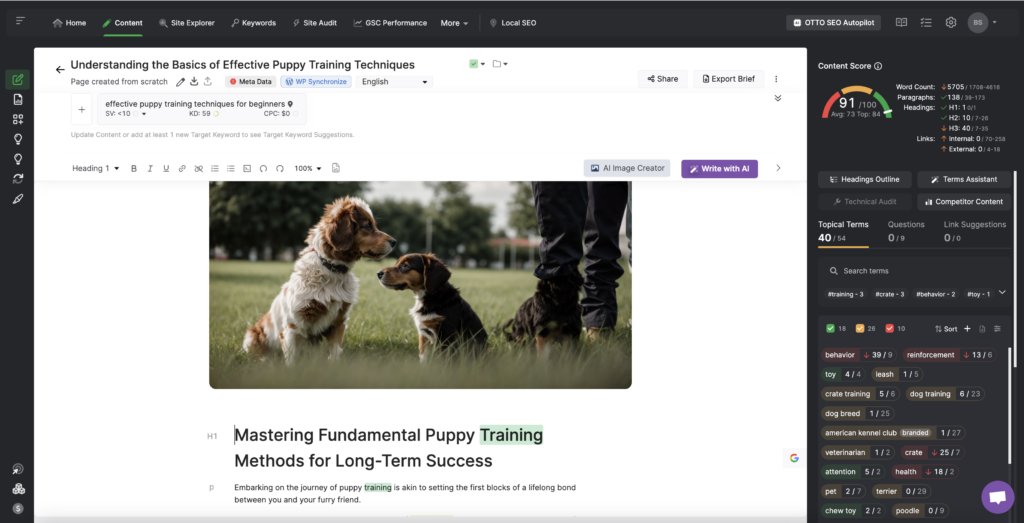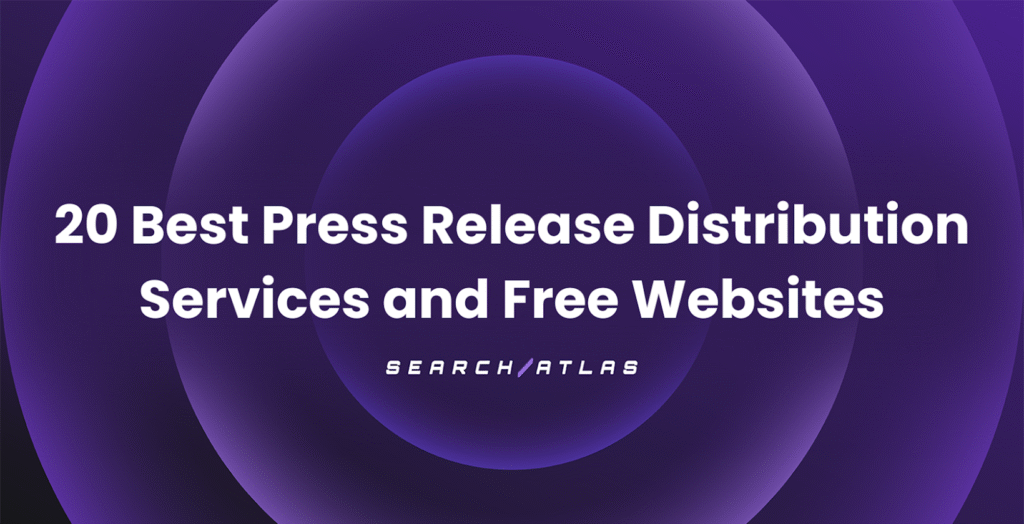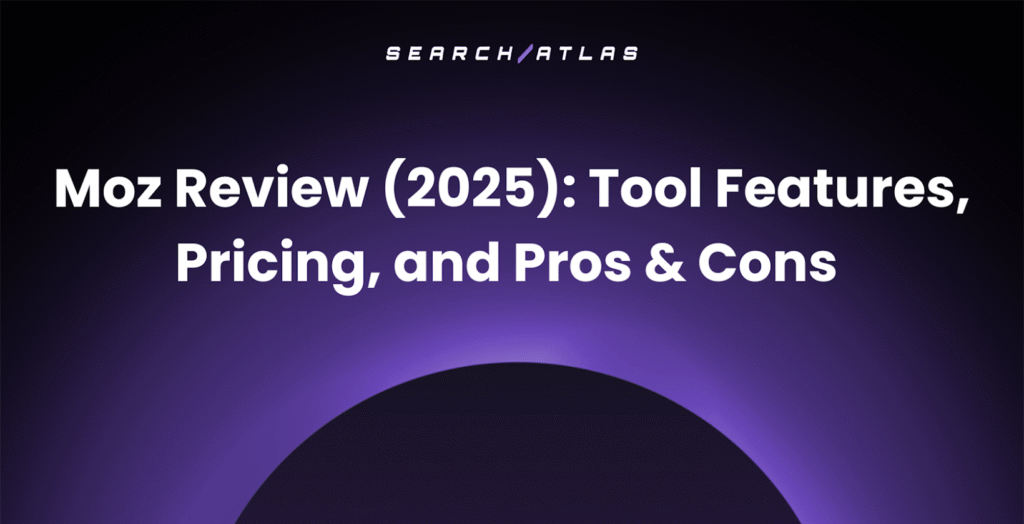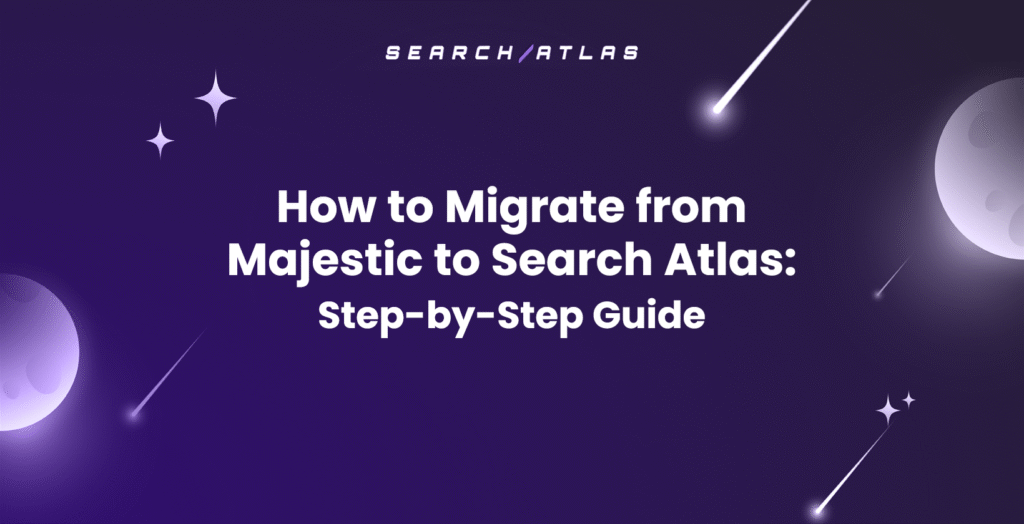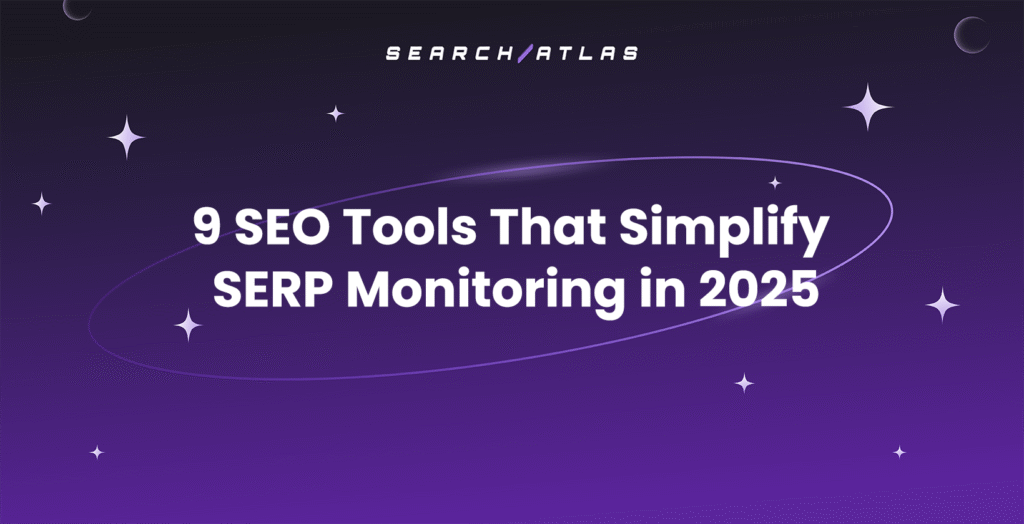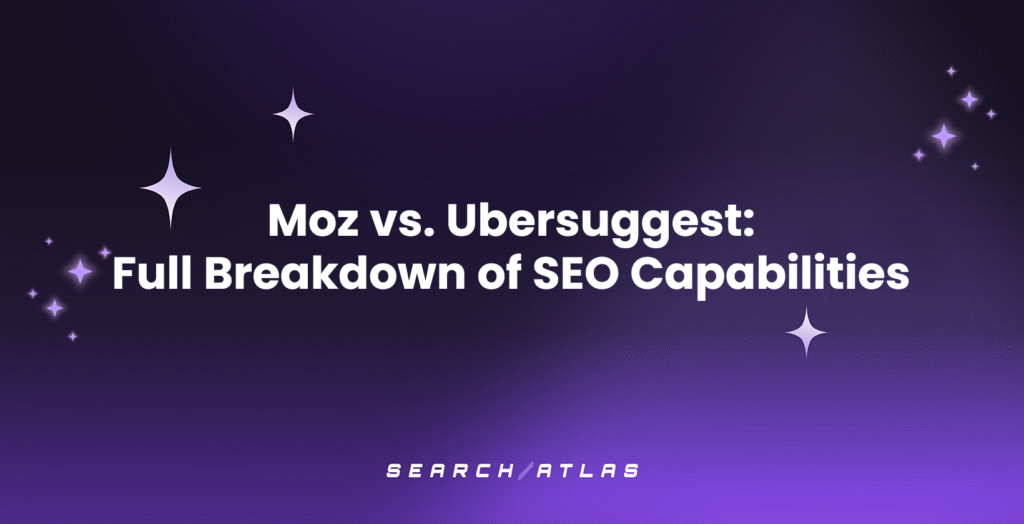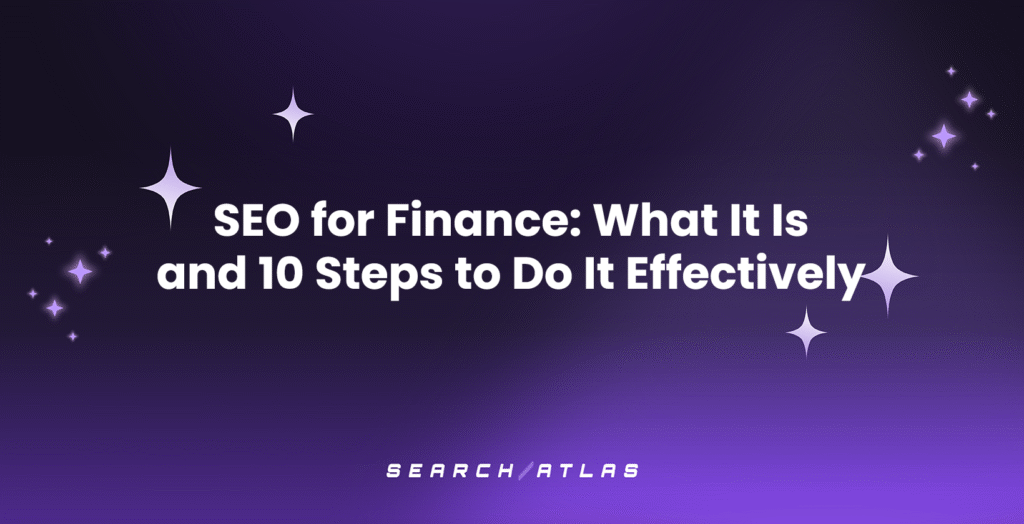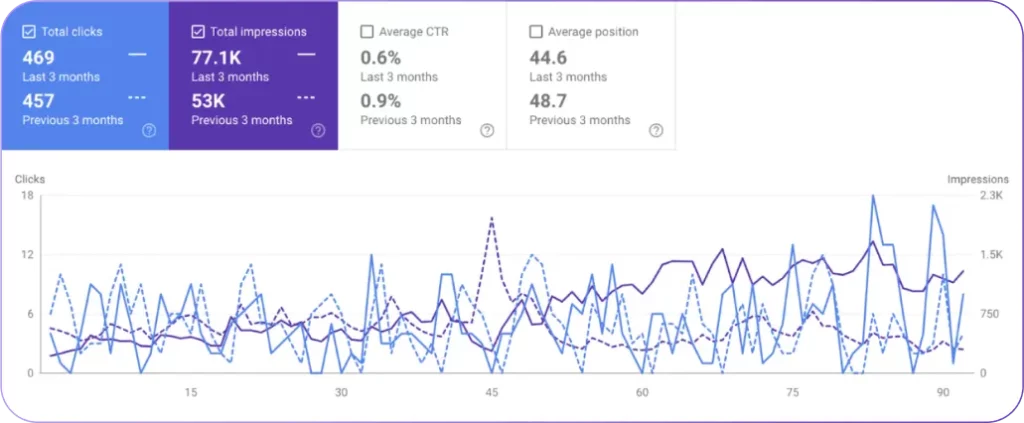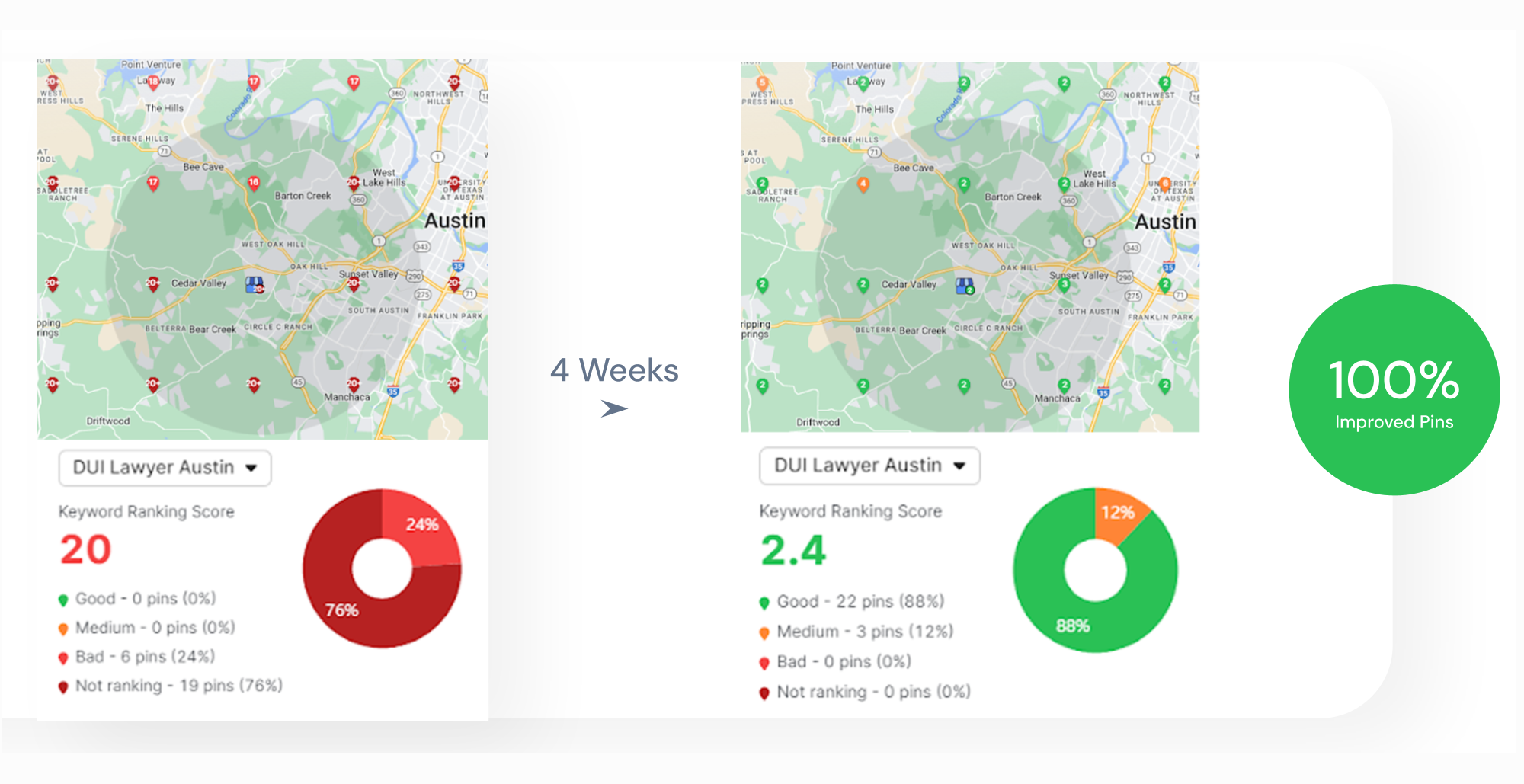Understanding Search Intent: Strategies for User-Focused SEO
In the labyrinth of digital marketing, understanding the nuanced demands of user search intent is paramount for any SEO strategy.
A marketer’s quest is not just to rank on search engine result pages but to precisely cater to the queries of each searcher, ensuring content not only resonates with the audience but propels them towards a targeted action.
From uncovering the target keyword that aligns with consumer desires, to curating a landing page that seamlessly guides users towards a purchase, the art of addressing search intent is both complex and critical.
By dissecting the subtleties of transactional, informational, and navigational search intents, enterprises unlock the potential to fortify their SEO foundation, boosting both visibility and user engagement.
Keep reading to unveil strategic insights that will transform your SEO approach into a user-focused powerhouse.
Key Takeaways
- SEO Strategies Must Align With User Search Intent to Effectively Meet the Needs of the Searcher and Improve Content Rankings
- Tools Like Search Atlas, With Features Like the Topical Map and on-Page Audit Tool, Are Instrumental in Analyzing and Optimizing Content for Search Intent
- Employing Long-Tail Keywords Is Crucial in Addressing the Specific Goals of Users and Enhancing Content Relevance for Better Search Engine Results
- Precise Metadata, Such as Title Tags and Meta Descriptions, Is Essential in Connecting User Searches With Relevant Webpages and Driving Traffic
- Internal Linking and Intuitive Site Navigation Are Key Factors in Improving User Engagement and Enriching the Overall User Experience on a Website
Deciphering the Four Types of Search Intent

As digital marketing campaigns increasingly focus on aligning with user behavior, comprehending search intent has become an essential facet of SEO strategy.
At the core of search engine optimization lies the ability to classify and respond to the four primary search intents that dictate user searches: informational, navigational, transactional, and investigational.
Grasping these categories empowers marketers and content creators to tailor their SEO approaches, ensuring that websites meet the specific needs of searchers.
This critical understanding begins with identifying informational intent in queries, where searchers aim to acquire knowledge, and recognizing transactional searches that signify a user’s readiness to purchase.
By aligning website content with the nuanced intent of a target audience, professionals can elevate user experience and improve search result rankings.
Identifying Informational Intent in Queries
Professionals leaning into modern SEO strategies recognize the significance of addressing the informational intent behind user queries. This aspect involves discerning when a person is seeking knowledge or guidance, which is frequently indicated by search terms interspersed with words like ‘guide,’ ‘how to,’ or ‘what is.’ It is the awareness of these telltale linguistic markers that allows the SEO strategist to optimize content, effectively targeting the desired audience whose primary goal is to learn or understand.
Understanding this content type is critical in crafting resources that satisfy the searcher’s quest for information. For instance, blog posts or FAQs designed to answer specific questions tend to align with the informational intent, positioning a webpage as a valuable resource and thus potentially earning a higher rank on the search engine result page where details and instructive data are sought after.
Recognizing Transactional Searches by Users
Delving into transactional search intent, industry professionals unveil patterns where users demonstrate a readiness to engage in a purchase or a specific action. By identifying keywords laced with intent such as ‘buy,’ ‘deal,’ ‘discount,’ or even brand and product names, websites can gear their content towards facilitating these decisive steps.
Optimization for transactional intent involves meticulous crafting of landing pages and product pages that offer clear, compelling calls to action. Aligning such user-centric pages with the transactional motivation, businesses effectively streamline the path from the search engine to the checkout process, enhancing the prospect of conversion.
Crafting Content That Aligns With User Needs

In the dynamic landscape of search engine optimization, professionals pivot towards strategies that prioritize the user, weaving intent-focused methodologies into the fabric of their content.
This approach necessitates a meticulous analysis of top performing pages, seeking insights into the alignment of content with user search intent.
By understanding the nuances that drive engagement, writers can craft articles that not only resonate with their audience but also bolster the integrity of the content’s purpose.
Whether the intent is to inform or to prompt a transaction, discerning and addressing the varied needs of searchers is paramount in curating content that captivates and converts.
Analyzing Top Performing Pages for Clues
Unlocking the secrets behind the success of top-performing pages can yield transformative insights for SEO strategy refinement. Professionals harness the analytical prowess of tools like Search Atlas to dissect these digital trendsetters, extracting valuable information on how well-aligned content resonates with the target audience’s search intent.
An exceptional tool at their disposal is the Topical Map within Search Atlas, which outlines the landscape of content types that garner significant traction and guides marketers in sculpting their material to mirror these patterns. This data-rich approach ensures a competitive edge by emphasizing content formats and strategies that elevate visibility and visitor engagement:
- Identification of prevalent themes and topics within high-ranking content.
- Analysis of keyword usage to understand the depth and breadth of subject matter coverage.
- Inspection of user interaction metrics to gauge content’s relevance and effectiveness.
As SEO professionals cultivate an in-depth comprehension of these benchmarks, the refinement of website content into a more potent vehicle for meeting searcher expectations and search engine criteria becomes a tangible outcome. Embracing these insights can ultimately shape a robust content strategy, carving a path to prominent SERP standings.
Engaging Readers With Intent-Focused Articles
SEO experts recognize that true engagement stems from producing content that earnestly reflects the motives behind a searcher’s query. Crafting articles that resonate begins with not only determining the appropriate keyword intent but also immersing the narrative in context that matches the user’s search intent, be that to inform, entertain, or lead to a transaction.
Through the intelligent use of tools such as Search Atlas, professionals can enhance their content’s relevance by tapping into the sophisticated On-Page Audit Tool which provides invaluable feedback on how effectively an article meets the search intent. This meticulous attention to detail ensures that each piece of content not only attracts but also retains the reader’s interest, propelling the probability of conversion or continued interaction with the site.
Optimizing Keywords to Match Search Intentions

In the realm of search engine optimization, the alignment of keywords with user intent is not just a best practice—it is a cornerstone of user-focused SEO.
It’s essential for professionals to employ nuanced strategies that transcend mere keyword placement, evolving into intelligent deployment of terms that address the underlying goals of the user search query.
Utilizing tools to uncover these intent-driven keywords and incorporating long-tail phrases to meet user goals is a delicate art that harmonizes linguistic precision with searcher expectations.
This approach ensures content relevance and maximizes the potential for user engagement and conversion.
Tools for Uncovering Intent-Driven Keywords
Amid the vast landscape of SEO, pinpointing the exact phrases and keywords that audiences use when engaged in specific search activities is critical. Search Atlas emerges as a pivotal asset for professionals seeking to uncover intent-driven keywords, offering a sophisticated Keyword Research tool designed to traverse through search volume, trends, and related terms that align with a user’s search intent and content strategy.
With the assistance of such powerful tools, SEO professionals can refine their focus on keywords that mirror the precise stages of a user’s decision-making process. The precision facilitated by the Search Atlas platform enables practitioners to craft content that addresses the desired action, whether it is seeking information, navigating to particular sites, or executing transactions:
- Discerning the nuance between informational and transactional keyword intent based on search query analysis.
- Leveraging search engine data to isolate search terms that directly relate to consumer behavior and expectations.
- Implementing the findings into content planning to assure that all content aligns with the specific intent of the target audience.
Incorporating Long-Tail Phrases to Meet User Goals
The precision of long-tail keywords plays a pivotal role in aligning with the specific goals of users, effectively addressing their complex queries with a higher degree of specificity. Professionals adept in search engine optimization recognize that these extended phrases, often mirroring the conversational tone of user searches, can greatly enhance the alignment between page content and search intent, leading to improved relevance and higher engagement rates on search engine result pages.
In the quest to satisfy the sophisticated needs of searchers, SEO strategists meticulously infuse long-tail keywords into content, aiming to capture the granular aspects of user intent. This targeted approach fosters a stronger connection with an audience that has clearly outlined their search goals, thereby increasing the likelihood of driving traffic from individuals who are further along in the decision-making process and are more likely to convert.
Leveraging Metadata to Reflect User Queries

Professionals in the realm of SEO understand the paramount importance of metadata when it comes to matching user queries with appropriate webpage content.
Crafted with precision, metadata such as title tags and meta descriptions act as pivotal signposts that guide search engines and searchers alike.
This precision, melded into the fabric of search result snippets, sets the stage for relevance and user engagement.
Purposeful crafting of title tags that resonate with the searcher’s language and constructing meta descriptions that promise content directly addressing users’ concerns are essential steps in fine-tuning a website’s search visibility and user attraction.
Writing Title Tags That Echo Searcher’s Language
SEO specialists recognize the vital role of title tags as conduits between the search engine and the searcher’s expectations. Crafting these snippets to reflect the language and phrases users deploy in their queries fosters instant resonance, signaling that the content behind the click is precisely what they seek.
Employing strategic title tag formulation, professionals ensure that each tag encapsulates the essence of the content’s relevance to targeted search terms, thereby enhancing click-through rates and visibility for pages that match the searcher’s intent. Precision in this aspect of metadata is key to bridging the gap between user searches and the information offered by a webpage.
Creating Meta Descriptions That Promise Relevant Answers
Meta descriptions serve as succinct yet powerful pitches that invite users to explore webpages, with effectiveness hinging on their relevance to the user’s original query. SEO experts meticulously conceptualize these descriptions to echo users’ needs, ensuring they articulate the core value of the content that awaits on the landing page and hint at fulfilling the specific search intent.
Seeing these meta descriptions as decisive opportunities for engagement, SEO professionals infuse them with target keywords that reflect the user’s search terms, all while making a promise of answers that are both relevant and valuable to the searcher. This deliberate practice turns meta descriptions into gateways that connect searcher curiosities directly to the answers they necessitate, greatly increasing the odds of click-through and satisfying visitor expectations.
Enhancing User Experience to Increase Retention

In the highly competitive realm of digital marketing, enhancing user experience emerges as a cornerstone of success, directly influencing user retention and website value.
Masterful alignment of SEO practices with user search intent necessitates more than just content precision; it demands an intuitive navigation system that swiftly directs searchers to the information they seek.
By judiciously harnessing site navigation and internal linking, SEO professionals create a seamless journey for users, not only responding to their initial query but also preemptively addressing subsequent informational needs.
Such sophistication in design fosters an environment where both user satisfaction and website authority flourish.
Improving Site Navigation for Efficient Information Retrieval
SEO veterans understand that efficient site navigation is a pivotal element of the user experience, actively aiding visitors in accessing information promptly and effortlessly. By refining website architecture, these professionals facilitate a user’s journey, directly from their initial search query through to the content they desire, thus reducing bounce rates and fostering user retention.
Streamlining the pathway to desired content through intuitive site navigation not only heightens user satisfaction but also signals to search engines the relevancy and user-friendliness of a site. This focus on efficient information retrieval contributes to improved search result rankings, as a well-structured site is more likely to satisfy searcher objectives and keep visitors engaged.
Utilizing Internal Linking to Satisfy Additional Queries
SEO experts capitalize on the power of internal linking to guide users through a website’s ecosystem, satisfying not just the initial search query but also ancillary inquiries that may arise. Such strategies involve placing strategic, contextually relevant links within content, creating pathways that anticipate and address the user’s evolving informational needs without overwhelming them.
By implementing internal links that connect logically to other content within the domain, websites can enhance user engagement, encouraging visitors to delve deeper into related topics and resources. This practice not only improves time on site and user experience but also reinforces the site’s authority and relevance in the eyes of search algorithms.
The Role of Visual Content in Meeting Search Expectations

In the intricate tapestry of search engine optimization, visual content emerges as a powerful ally, enhancing the user’s journey and reinforcing the alignment with search expectations.
Recognizing the profound impact of well-chosen images and videos on the resonance of user searches, SEO strategists meticulously integrate these media formats to amplify query purpose and enrich content depth.
As these professionals deploy A/B testing to evaluate the effectiveness of visual elements, they gain invaluable insights that inform strategic decisions, bolstering engagement and ensuring that each visual adjunct is perfectly poised to satisfy the searchers’ intent.
Integrating Images and Videos That Resonate With Query Purpose
Visual content optimization is a key factor in meeting the versatile needs of a search engine’s users, who often seek immediate visual information. SEO strategists are tasked with selecting images and videos that not only complement textual content but also embody the specific search intent. By doing so, they ensure that visual elements support the user’s quest, whether it be for learning, purchasing, or entertainment, consequently enhancing the efficacy of the site’s SEO.
Professionals in search engine optimization continuously adapt their use of visual media to align with the anticipated user search intent. They employ relevant and engaging images and videos that not only attract attention but also succinctly convey the message, fulfilling the searcher’s expectations. The strategic use of these visual aids substantially increases the chances of connecting with the audience, fostering user engagement and reinforcing the content’s purpose on the search engine result pages.
A/B Testing Visuals to Determine Effectiveness
In the realm of SEO, A/B testing serves as a rigorous analytical process that evaluates the effectiveness of visual content in enhancing user engagement. SEO professionals employ this comparative testing method, showcasing different visual iterations to segments of the audience to determine which visuals are most conducive to fulfilling their search intent.
This strategy permits a data-driven understanding of how different images or videos impact user behavior and assists in identifying which content formats yield the highest performance in terms of click-through rates and time spent on page. By discerning the visual preferences of their audience, SEO experts can refine the aesthetic elements of a site to better align with user expectations and search query relevance.
Frequently Asked Questions
What are the four types of search intent and how can they impact SEO strategies?
The four types of search intent—informational, navigational, transactional, and investigational—play a critical role in shaping SEO strategies as they offer insight into the searcher’s purpose, guiding the creation of content that aligns with users’ needs and search queries. Recognizing and optimizing for the specific intent behind a search term can significantly influence the effectiveness of a website’s SEO efforts, as it ensures the content presented matches the expectations and demands of the target audience, thereby improving search engine result page rankings and user engagement.
How can I create content that aligns with user needs and enhances search engine visibility?
Creating content that resonates with user needs and bolsters search engine visibility is a multi-faceted endeavor requiring an understanding of user search intent and the deployment of savvy SEO strategies. By leveraging tools such as Search Atlas, which facilitates comprehensive SEO and content marketing tasks, including keyword research and content optimization, content creators can craft materials that not only speak to the user’s queries but also rank well on search engine result pages.
Understanding user intent is pivotal; it dictates whether a searcher is looking for information, aiming to make a purchase, or navigating to a specific site. For instance, transactional search intent indicates the user’s desire to buy, making it essential for a product page to cater to this intent with clear, persuasive content. Conversely, informational intent suggests the searcher is looking for knowledge or answers, where well-researched blog ideas and a robust FAQ section can serve the customer effectively.
Search Atlas stands out by offering a suite of tools designed to align with these varied needs. It’s Topical Map and Site Explorer enable marketers to uncover the landscape of a topic and analyze the domain authority of competitor sites. Meanwhile, the Keyword Research tool and Content Planner help to determine a product’s target keyword, considering factors like search volume and relevance to the target audience.
To optimize content for search engines and user satisfaction, an On-Page Audit Tool evaluates existing pages, offering insights into how well they’re tailored to searcher needs and SEO best practices. Additionally, the SEO AI Otto integrates advanced tactics into content marketing strategies, guiding writers through the content creation process informed by user searches and keyword intent.
The Platform’s Backlink Analyzer and Domain Authority Checker are vital for assessing the SEO health of a domain. These tools help to understand which backlinks are boosting a site’s credibility and which may require attention. With a systematic approach to content marketing, combined with the analytics from Search Atlas, businesses can refine their marketing strategy, ensuring that every blog post, guide, or landing page is a strategic touchpoint that connects with consumers and supports search engine optimization objectives.
Ultimately, successful content aligns closely with the search query and intent of the user; it leverages precision-targeted SEO techniques to ensure visibility where and when it matters. Search Atlas equips content marketers and SEO strategists with a thorough toolkit to achieve this alignment, enabling the creation of targeted, intent-driven content that fulfills both user needs and marketing objectives.
What are some effective strategies for optimizing keywords based on search intentions?
Optimizing keywords based on search intentions involves aligning content with the user’s stage in the buyer’s journey, ensuring the chosen keywords match the user intent, whether informational, transactional, or navigational. Content creators should leverage tools like Search Atlas to conduct thorough Keyword Research, use the Topical Map for understanding related topics, and apply the insights from the Content Planner to develop targeted content that resonates with the searcher’s needs.
How can metadata be leveraged to reflect user queries and improve search rankings?
Metadata serves as a concise summary of a web page’s content and should encapsulate relevant information mirroring searcher queries, thus aligning with user intent to enhance search engine visibility and improve rankings. By strategically incorporating key terms derived from meticulous keyword research, such as target keywords reflecting user search intent, metadata can signal relevance to search engines, effectively bridging the gap between search queries and the content provided, encouraging higher placement on search engine result pages.
In what ways can a focus on user experience and visual content contribute to higher retention rates and improved search performance?
Focusing on user experience and visual content can significantly boost retention rates by ensuring that visitors find a website engaging and easy to navigate, thus increasing the likelihood of repeated visits and interactions. In terms of search performance, a website that delivers a superior user experience is often rewarded by search engines with higher rankings, as these platforms prioritize sites that fulfill searcher’s needs and encourage positive user behavior signals.
Conclusion
Understanding search intent is crucial for crafting a successful, user-focused SEO strategy.
By identifying whether a user’s query is informational, navigational, transactional, or investigational, professionals can tailor content to match these intents.
Informational searches require educational content, while transactional intent calls for optimized landing pages that lead users towards making a purchase.
Integrating long-tail keywords and using tools like Search Atlas can unveil intent-driven keywords, enhancing content relevance and engagement.
Effective SEO also involves crafting metadata that reflects the language of user queries, thereby boosting click-through rates and search visibility.
Enhancing the user experience through intuitive navigation and internal linking is essential for retaining users and reducing bounce rates.
Additionally, visual content must align with search expectations, and A/B testing can help determine the most effective visual elements.
Overall, understanding and aligning with search intent is key to satisfying user needs and improving search result rankings.

